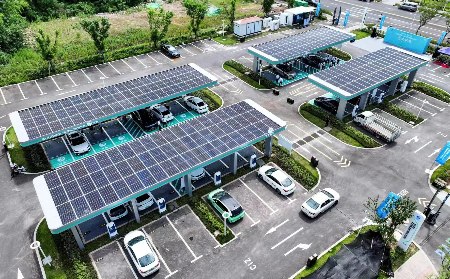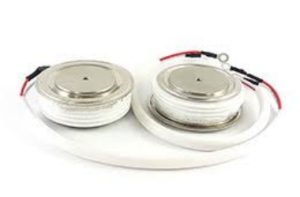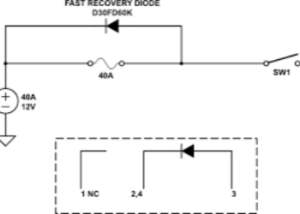Electronic Components Supplier | Transformers, Inductors, Inverters
Introduction: Breaking Free from the Grid
In an era of rising electricity costs and unreliable power grids, off-grid solar power systems are becoming the gold standard for energy independence. Whether you’re a remote homeowner, a prepper, or an eco-conscious adventurer, going off-grid with solar offers unmatched freedom, sustainability, and cost savings. This guide dives deep into how off-grid solar systems work, their benefits, and why they’re the future of self-sufficient energy.
What Is an Off-Grid Solar Power System?
An off-grid solar system operates completely independent of the traditional power grid. Unlike grid-tied solar setups, these systems:
✔ Generate 100% of their own electricity
✔ Store excess power in batteries for nighttime/cloudy days
✔ Require no utility bills—ever

Key Components of an Off-Grid Solar System
- Solar Panels – Capture sunlight and convert it into DC electricity.
- Charge Controller – Regulates battery charging to prevent overcharging.
- Battery Bank – Stores energy for use when the sun isn’t shining.
- Inverter – Converts DC power into AC power for household appliances.
- Backup Generator (Optional) – Provides extra power during extended bad weather.
Top 5 Reasons to Go Off-Grid with Solar
1. Total Energy Independence
No more blackouts, price hikes, or reliance on utility companies. With an off-grid solar setup, you control your power supply—rain or shine.
2. Lower Long-Term Costs
While the upfront investment is higher than grid power, off-grid solar systems pay for themselves over time by eliminating monthly electricity bills.
3. Perfect for Remote Locations
Building a cabin in the woods? Living on a boat or RV? Off-grid solar makes power accessible anywhere, even in the most isolated areas.
4. Environmentally Friendly
Zero emissions. No fossil fuels. Just clean, renewable energy straight from the sun.
5. Resilience Against Disasters
With extreme weather and grid failures becoming more common, an off-grid solar system keeps your lights on when others go dark.
How to Size Your Off-Grid Solar System
Choosing the right system depends on:
🔋 Your daily energy usage (kWh)
☀ Sunlight availability in your region
⚡ Peak power demands (starting large appliances)
Example Calculation:
If your home uses 10 kWh per day, you’ll need:
- ~3,000W solar panels (assuming 5 peak sun hours)
- ~20 kWh battery storage (for 2 days of backup)
- A 5kW inverter (to handle surges from appliances)
(Pro Tip: Use an off-grid solar calculator for precise sizing!)
Off-Grid vs. Grid-Tied vs. Hybrid Systems
| Feature | Off-Grid | Grid-Tied | Hybrid |
|---|---|---|---|
| Energy Independence | ✅ Yes | ❌ No | ⚠ Partial |
| Battery Storage | ✅ Required | ❌ Optional | ✅ Optional |
| Works During Blackouts | ✅ Yes | ❌ No | ✅ Yes |
| Best For | Remote homes, preppers | Urban homes, net metering | Backup power seekers |
Cutting-Edge Innovations in Off-Grid Solar
The future of off-grid power systems is smarter and more efficient:
🔹 Lithium Batteries – Lighter, longer-lasting than lead-acid.
🔹 Smart Energy Management – AI optimizes solar/battery/generator use.
🔹 Modular Solar Kits – Plug-and-play systems for easy DIY installation.

Conclusion: Is Off-Grid Solar Right for You?
If you value freedom, sustainability, and resilience, an off-grid solar power system is a game-changer. While it requires careful planning, the payoff—lifetime energy security—is priceless.
Ready to ditch the grid? Start exploring off-grid solar solutions today!







